Are you looking for an easy way to stay hydrated no matter where your outdoor adventures take you? If so, a water bladder could be the perfect solution for you. Not only do they allow for hands-free hydration, but they can be installed in almost any backpack! In this article, we’ll cover everything you need to know about putting a water bladder in a backpack and provide useful tips to make sure you have the best setup possible.
How does a water bladder work?
A water bladder is a flexible and collapsible container that holds liquid, usually water. It is usually made of plastic or rubber and has a tube attached to it for drinking the liquid inside. Water bladders come in different sizes, so you can choose one that fits your needs perfectly. The tube normally attaches to the top of the bladder and extends outwards to make it easier to drink from.
The main benefit of using a water bladder over regular water bottles is that they are much easier to drink from without having to stop and take the bottle out of your bag. This makes them perfect for long hikes, bike rides or any other activity where you need a steady supply of hydration while on the go.
You can also use ice cubes if you want to keep your water cold for longer periods of time. The bladder can also be cleaned easily with warm soap and water after every use to ensure it stays hygienic and odor-free.
So if staying hydrated during a long journey is important to you, investing in a good quality water bladder is definitely worth it! It will make sure that you stay adequately hydrated throughout your adventure without having to worry about carrying too many water bottles.
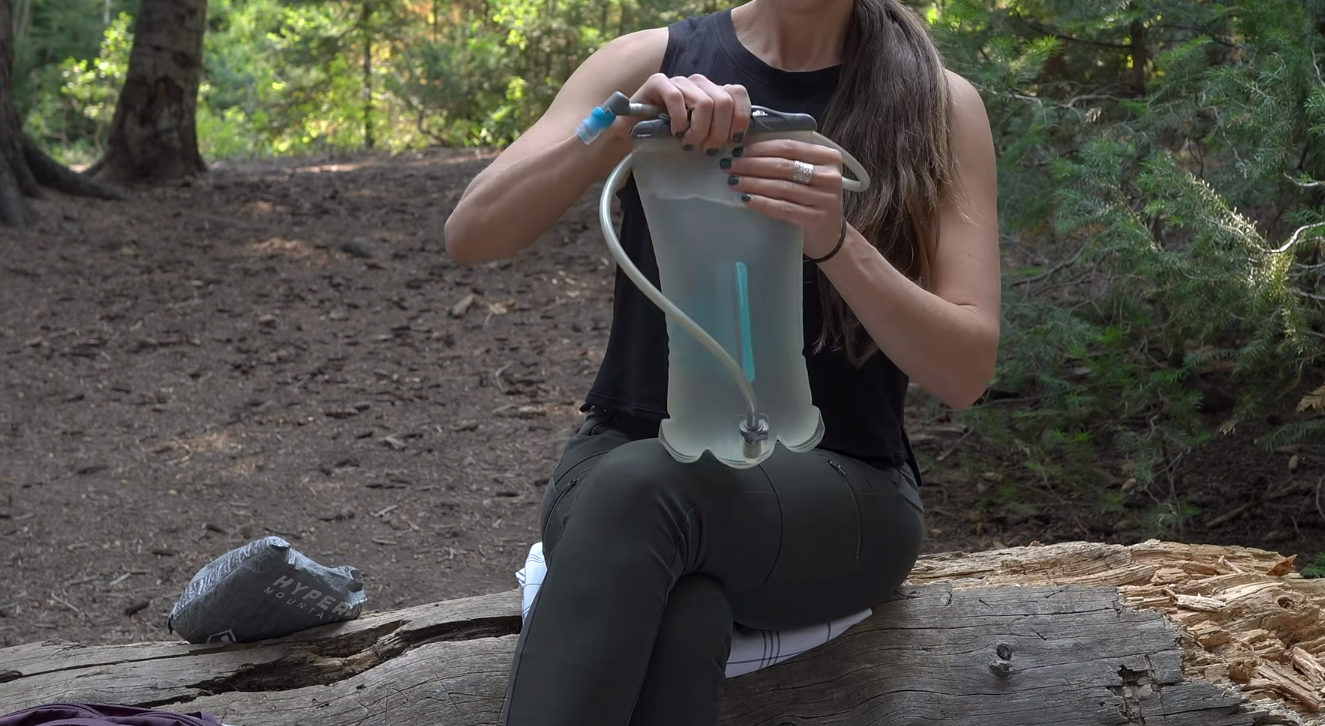
Do you need to put a hydration pack in a backpack?
If you’re an avid outdoorsman or hiker, a water bladder can be a great way to stay hydrated on the go. Bladders are lightweight and easy to store in your backpack. But not all backpacks are designed with hydration bladders in mind – so how do you know if yours is compatible?
The answer depends largely upon the type of bladder and type of backpack that you have. Generally speaking, you should be able to fit most standard-sized water bladders into any regular-sized backpack, though some may require some modification or jerry-rigging (such as holes cut for hose access). However, if your pack has internal frame supports or other non-removable parts, these could interfere with the bladder’s fit.
To ensure that your water bladder doesn’t leak onto any other items inside of your bag, consider purchasing a sleeve or cover specifically designed for storing hydration packs in backpacks. These are typically made from durable waterproof materials that will provide an extra layer of protection against accidental spills.
In the end, it all comes down to your specific setup and preferences. If you’re in doubt, try doing a bit of research online or asking an expert in your local store for advice – they’ll be able to provide more tailored guidance on what type of packing solution might work best for you.
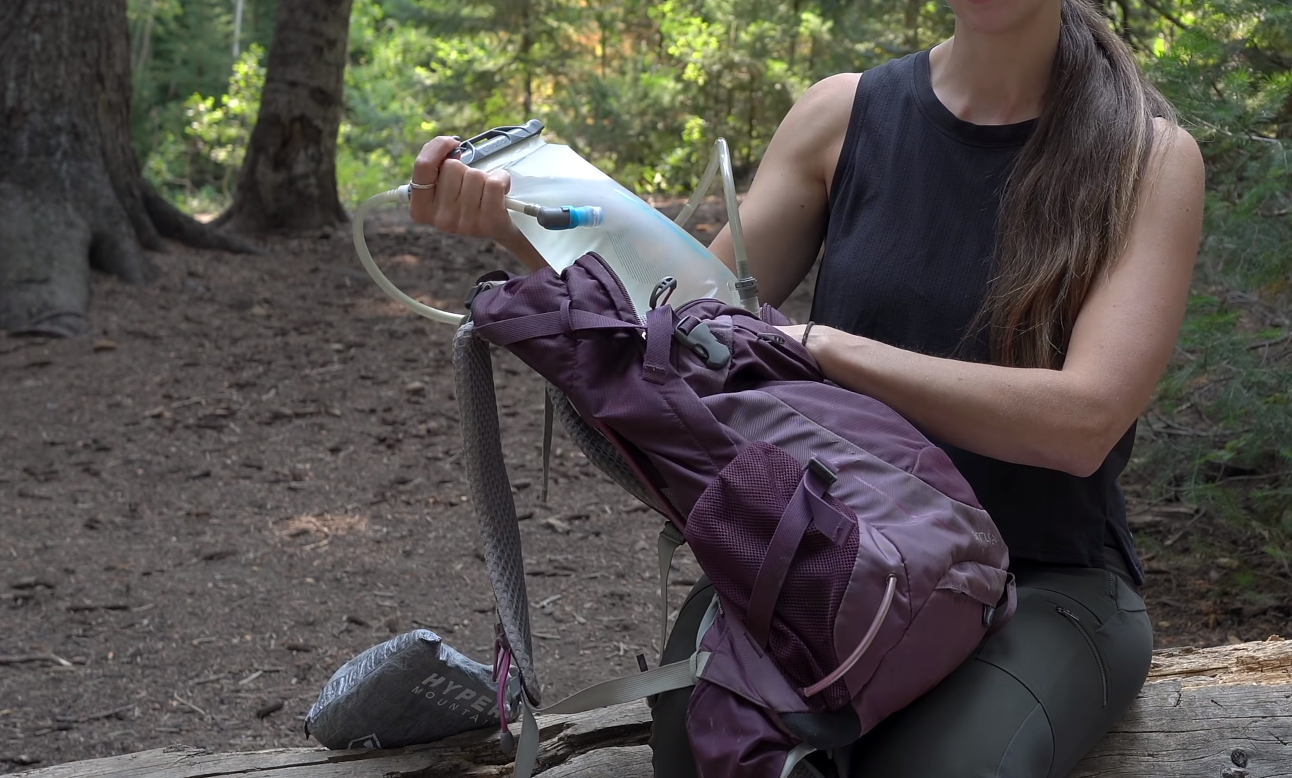
A typical hydration backpack
When you’re looking for a hydration backpack to hold your water bladder, there are several features you should look out for. Most importantly, the bag needs to have an insulated pocket that is designed to fit a water bladder. This feature helps keep the liquid inside cool and prevents it from leaking out of the bag. Additionally, many hydration backpacks come with adjustable straps that allow you to customize the fit of the pack on your back. This increases comfort while carrying and ensures that the bag stays secure during activities such as hiking or running.
You should also check if there are any pockets or compartments on the outside of the bag that provide easy access to items such as keys, wallets, and phones. Furthermore, many hydration backpacks come with adjustable sternum and waist straps that can be used to secure the pack in place.
By considering these features, you can find a perfect bag suited for carrying your water bladder. With the right bag, you’ll be able to enjoy your outdoor activities with ease while having easy access to cold, refreshing water!
A hydration vest
A hydration vest or pack with a water bladder is definitely a great way to stay hydrated during long outdoor treks or hikes. The question that arises then is, can you put a water bladder in any backpack?
The answer to this is yes and no. It depends on the type of backpack and the shape of its interior pocket. If your backpack has an open-top main compartment, then you’ll likely be able to fit a water bladder into it without any issues. However, if your bag lacks an open top main compartment or does not have enough room for the water bladder, it might be challenging to make it fit.
It’s always best to check your specific bag’s specifications before attempting to insert a water bladder in it. If your bag is large enough, you may be able to get away with fitting a water bladder into it. Additionally, some packs have extra pockets inside the main compartment that can be used to fit a water bladder while still allowing storage for other items.
It’s also important to keep in mind that having a bladder full of water inside your backpack may make it a bit more cumbersome. If the weight is something you’d like to avoid, you can always opt for a hydration vest or pack that fits snugly around your torso and provides easy access to water without having to carry the additional weight.
No matter which option you choose in the end, the important thing is to stay hydrated while out on your adventures! This guide should have provided you with all of the information and tips needed to help you decide whether or not you can put a water bladder in any backpack. So go ahead and get yourself ready for some exciting outdoor fun!
A typical backpack with a hydration pocket
The most common water bladder backpacks are designed with a special hydration pocket that’s just the right size to fit a water bladder. This type of pocket is usually located on the inside or outside of the main compartment and has enough room for the water bladder as well as any other items you’re carrying in your backpack. Some backpacks also have additional side pockets specifically designed to hold a water bladder, so it’s easy to access when you need to take a drink.
What to look for when choosing a hydration bladder
When you are shopping for a hydration bladder, there are several things you need to consider. First, it is important to choose one that is made of high-quality material. It should be durable and long-lasting so that it can withstand constant use without wearing out quickly. Additionally, the water bladder should have an easy-to-use connection system which makes filling and draining the bag effortless.
Choosing the right hydration bladder is essential for ensuring that your water supply stays secure inside your backpack. With the right features and material, you can trust that your bladder will provide you with clean, fresh water whenever you need it.
Pick the right hydration pocket size
When you’re looking to buy a hydration pocket for your backpack, it’s important that you choose the right size. If the pocket is too small, there won’t be enough room for the bladder or your other items. On the other hand, if your hydration pocket is too large, it may not fit properly in your backpack and could cause it to become unbalanced. It’s best to measure both the bladder and the backpacks main compartment before making a purchase so that you know exactly what size of hydration pocket you need.
Another factor to consider when picking out a hydration pocket is how much water storage capacity it provides. Most pockets can accommodate anywhere from 1-3 liters of water, so be sure to choose the right size for your intended needs. You may also want to consider investing in a bladder with an insulated sleeve if you plan on drinking cold water during your hikes or other activities.
Finally, always make sure that the hydration pocket you’re buying is compatible with your backpack. Many brands sell hydration pockets specifically designed for their backpacks, and these are usually the best option as they provide perfect fit and optimal performance.
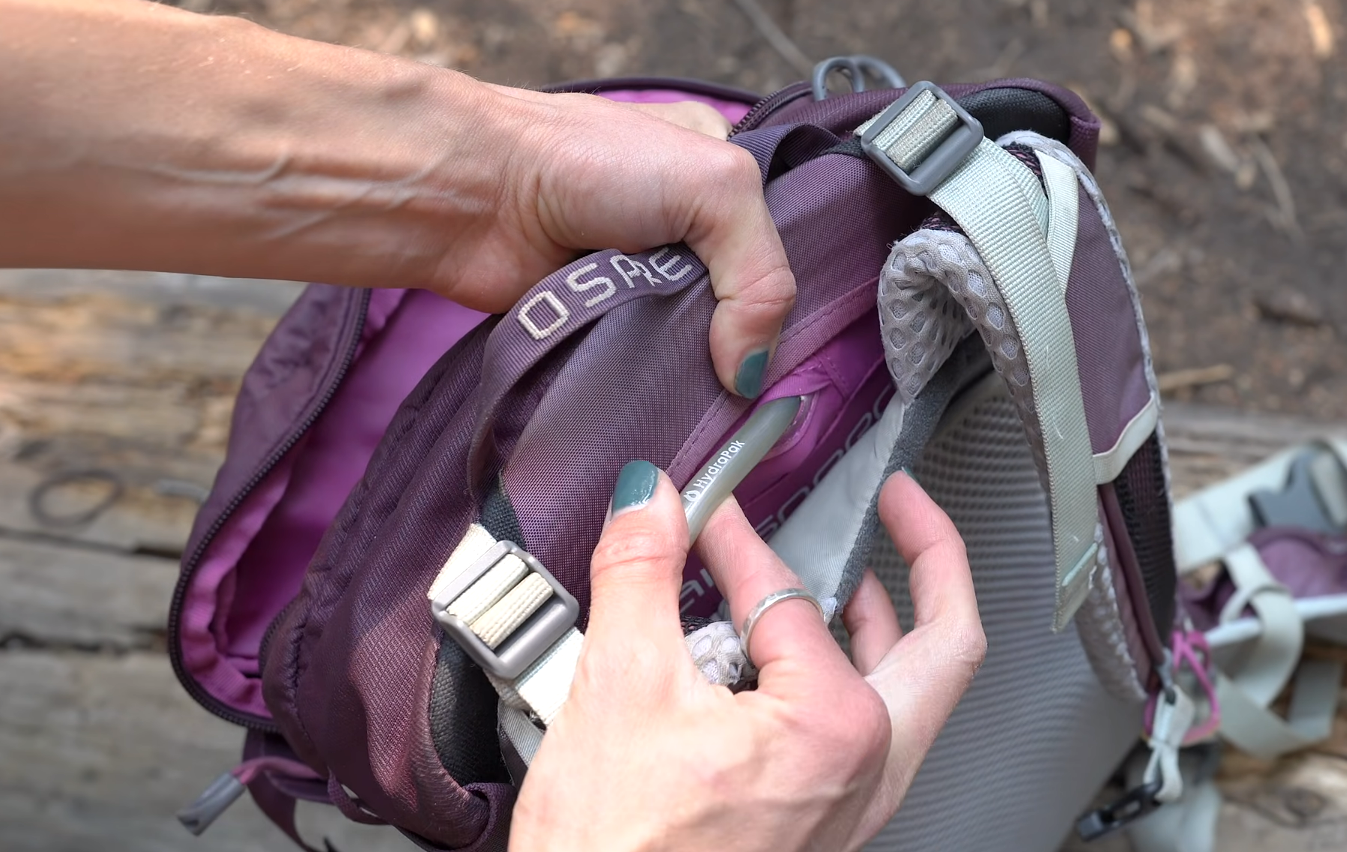
Check the position of the water bladder and tube
When deciding if you can put a water bladder in your backpack, it’s essential to check where the water bladder and tube will be placed. Some backpacks have special compartments or pockets specifically designed for water bladders and hoses. If you’re using a backpack without these features, make sure that the position of the water bladder won’t interfere with any other items stored in the bag. It should also be easy to access so that you can quickly grab a drink when you need one. Additionally, consider how tight or loose the pack will be when loaded with a full-sized water reservoir so that it doesn’t shift unnecessarily while on the move.
By checking all these factors before making your decision, you can determine whether or not it’s possible for you to put a water bladder in any backpack safely and effectively. For more helpful tips on how you can make the most out of your outdoor adventures, check out our blog page!
Buy a water bladder that is of high enough quality
When it comes to buying a water bladder, make sure you buy one that is of high enough quality. The last thing you want when you are out and about is a leaky or faulty bladder. There are many different types of bladders available on the market, so make sure to do your research and find one that will fit into your backpack perfectly and be able to withstand whatever activities you take part in while wearing it.
Can you put a Water Bladder in any Backpack?
The answer to this question is yes, you can put a water bladder in almost any backpack. A water bladder is essentially a collapsible container that holds liquid and features a drinking tube for easy access to your hydration source. It’s perfect for anyone who likes to stay active on the go, such as hikers or cyclists.
But before you grab a water bladder and stuff it into your current bag, there are a few things to consider:
- Does the backpack have enough room for it? You’ll want to make sure there’s plenty of space for the bladder without compromising other necessary items that may need to fit in the bag.
- Is the design of the pack suitable? The water bladder will be held against your back and you’ll want to make sure the material is breathable enough for comfort, especially during physical activity.
- Are there any straps or accessories that can be used to hold it in place? If the water bladder fits a bit loosely inside the bag, you may want to look into straps or clips that will help keep it secure. [1]
Once you’ve taken these elements into consideration, it’s time to start shopping! Look for bags with compartments specifically designed for water bladders. These are typically found near the top of the backpack and feature an opening at the bottom to allow a tube through. Depending on what type of activity you plan on doing, some packs offer features such as additional padding or extra pockets that can come in handy.

Types of Water Bladders
When considering if you can put a water bladder in your backpack, it’s important to understand the different types of water bladders available. The most common type of water bladder is a hydration pack. These are designed to fit into specially designed compartments inside backpacks and provide easy access for drinking on the go. Some backpacks even come with an integrated retractable hose that attaches directly to the hydration pack, making them very convenient.
Camelbaks are another popular option. These feature a large bladder made from vinyl or plastic that is usually filled with a special filtering system so that you can refill it with any fresh water source. Unlike hydration packs, Camelbacks do not fit into a backpack, so you’ll need to purchase a separate carrying case for it.
Finally, there are insulated bladders which keep your water cool even in hot temperatures. These are great if you’re out hiking or camping in the summer and don’t want your water supply to get too hot. Insulated bladders come in various sizes and can be attached directly to the inside of your backpack or stored separately in an included container.
Hiking Hydration Backpacks
If you’re an avid hiker, then a hydration backpack might be something that you want to consider when it comes to carrying your water. A hydration backpack is specially designed with a built-in pouch or bladder for carrying and storing water. Generally, these backpacks come in two different sizes – 2L and 3L – offering enough capacity for small to medium-sized hikes.
Now, when it comes to putting a water bladder in any backpack, the answer is yes and no. Yes, you can put a water bladder into just about any bag or backpack as long as there’s enough space for it to fit properly. However, not all backpacks are designed with a hydration system in mind so they might not have features such as insulated hose routing and clips to hold the bladder in place. If this is the case then your best bet would be to invest in a purpose-built hydration pack which caters specifically for hiking activities.
So if you’re looking for an easy way to stay hydrated during your next hike, consider investing in a quality hydration backpack. Not only will it make carrying your water much easier, but it’ll also leave your hands free to better enjoy your outdoor experience.
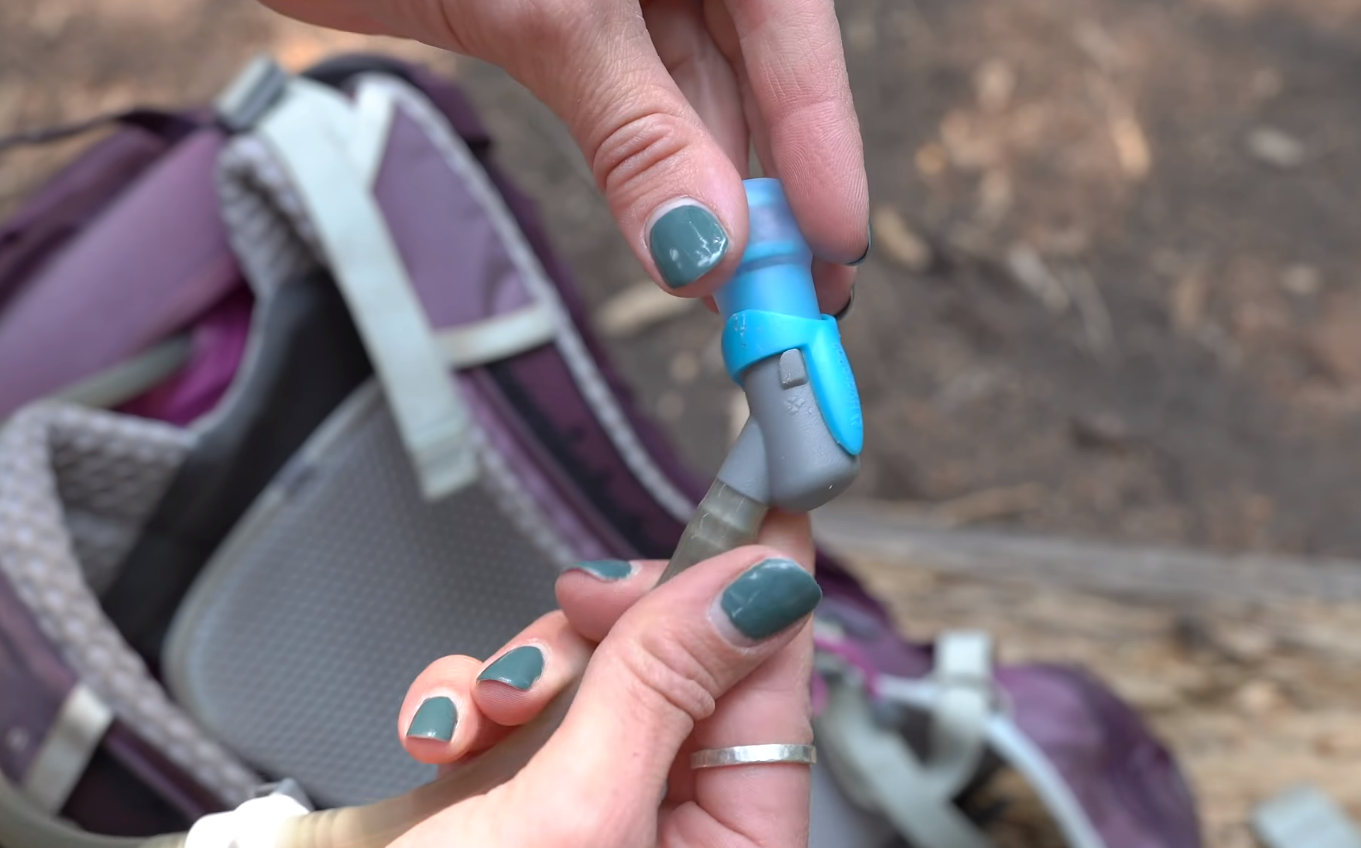
Cycling Hydration Backpacks
One of the simplest ways to stay hydrated while out on a bike ride is with a cycling hydration backpack. A cycling hydration backpack is designed specifically for carrying water, and typically comes with an integrated bladder that you can fill up and clip into the bag. This makes it incredibly easy to drink on the go while keeping your hands free. Plus, many of these backpacks come with additional compartments for storing snacks, tools, and other items you’ll need when you’re out on a long ride.
Running Hydration Packs
For runners, there is another option for carrying fluids while on the go – running hydration packs. These ‘packs’ are designed to be worn on your back and usually consist of two components: a backpack (which holds all other items) and a water bladder (which carries liquid).
The main benefit of using a running hydration pack is that you can easily access and drink the liquids in it without having to stop and take off your backpack. In addition, the weight is more evenly distributed compared to if you were carrying bottles in your hands. Plus, they come with many features such as insulated pockets which keep beverages cold or hot.
If you do decide to purchase a running hydration pack, there are several key features that you should look for. For example, make sure the pack has adjustable straps so it can be adjusted to your body size. Check if there are insulated pockets for keeping drinks warm or cold. And make sure it has enough storage space for carrying all your gear.
Finally, consider what type of material the backpack is made from – it should ideally be lightweight yet durable enough to withstand wear and tear over time.
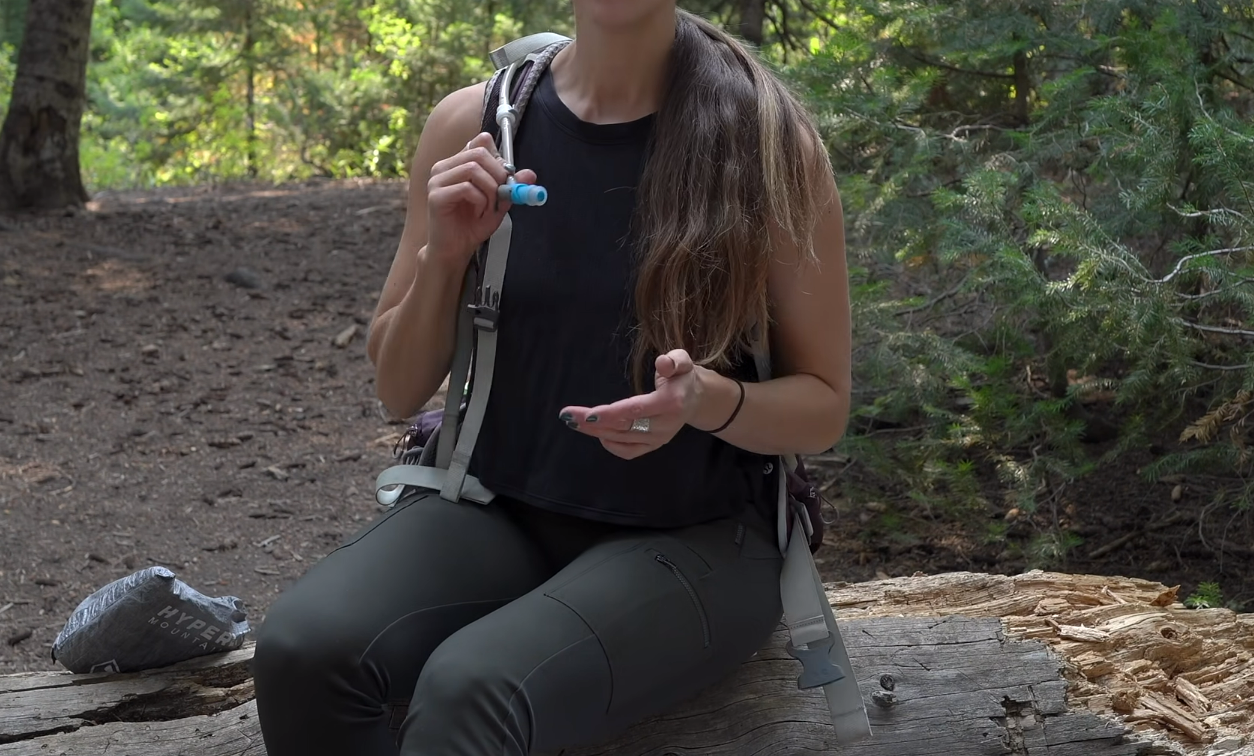
Waist Packs
If you’re looking for the most compact way to carry water, a waist pack with a water bladder is ideal. This is a great option if you want hands-free hydration while running or hiking. It also keeps your water supply close to your body and won’t pull on your shoulders like a heavy backpack. Waist packs are lightweight and often come with pockets for storing small items like keys and snacks. When choosing a waist pack, make sure that it fits snugly around your hips so it won’t slip when you move around. Also look for one with adjustable straps so you can get the perfect level of comfort for any activity. You may need to buy an additional hose or clips if they don’t come with your bladder.
The only downside of using a waist pack is that it may not provide enough storage for longer trips. If you’re planning on going on an extended hike or camping trip, then you’ll need to choose a different type of backpack with more room and pockets. However, if you’re just looking for a convenient way to carry water while exercising or running errands, then a waist pack with a water bladder is the perfect choice!
Reservoir Capacity
When looking for a water bladder for your backpack, one of the first things you should consider is the capacity that it offers. Water bladders come in various sizes, ranging from 1 liter to 3 liters and beyond. Depending on how long you plan to be out on your hike or outdoor adventure, you’ll want to make sure you get one with enough capacity to last you through the day.
Finally, you should also consider the quality and durability of the water bladder itself. This is important if you plan on using it frequently for long periods of time or in adverse conditions, as a poorly-made water bladder may not last very long. Look for one that is made from durable materials and has features such as a reinforced handle or anti-leak valve system. That way, you can be sure that it will withstand the rigors of outdoor use.
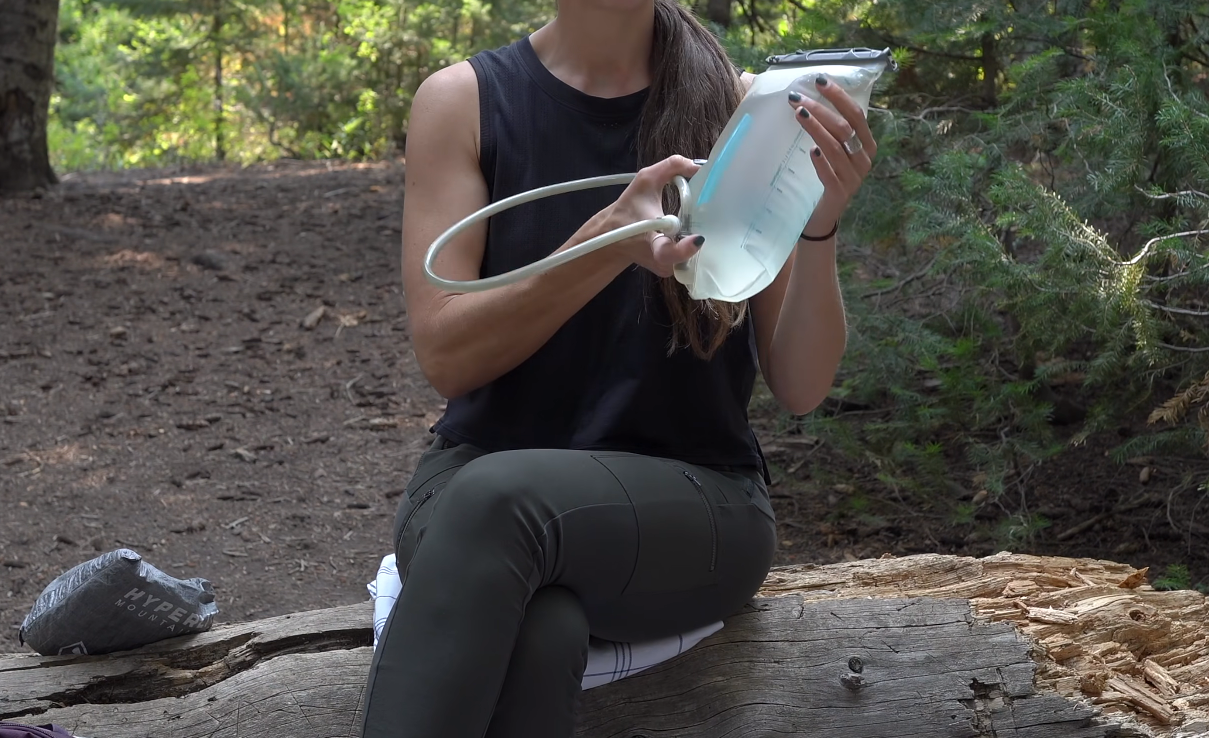
H2 to 2.5 liters
For most small day trips, a water bladder ranging from 2 to 2.5 liters is best. This will provide you with enough capacity to last throughout the day without being too bulky or heavy to carry around. If you’re planning on going out for longer periods of time or are expecting cold weather, then it may be worth getting a larger size as this will provide more drinking water and keep it from freezing.
When choosing what type of material your water bladder should be made of, look for something that can withstand wear and tear over time. Many bladders come in plastic or fabric materials, but some higher-end models are also available in Kevlar or other composite materials for extra durability. In addition, make sure you check for features such as reinforced handles, bite valves and anti-leak systems.
Half liter to 1.5 liter
For shorter trips with lighter loads, a water bladder between 0.5 liter and 1.5 liters is the best option. This will provide enough drinking water for a few hours without being too bulky or heavy to carry around. As mentioned above, make sure to check what type of material it’s made of and whether it has any special features such as reinforced handles or anti-leak systems.
Finally, consider how easy it is to fill and empty your water bladder when making your decision. Some bladders come with wide openings which makes them easier to fill from large containers such as bottles or streams; however, some have narrower opening that require you to use a dedicated filling system or even an adapter in order to use them.
3 to 5 liters
For longer trips or hikes of several days, a water bladder between 3 and 5 liters is the best option. These provide more than enough capacity to last you throughout the day and can even be used over multiple days if necessary. When looking for one of these larger bladders, make sure to check for quality materials, reinforced handles, bite valves and anti-leak systems as this will help ensure that it lasts through your outdoor adventures for years to come.
Finally, consider how easy it is to fill up your water bladder when making your decision. As with smaller bladders, some have wide openings which make them easier to use from large containers or streams; however, some require dedicated filling systems or adapters in order to work.
Hopefully this guide has given you some useful information when it comes to choosing the right water bladder for your backpack. Remember, having a good quality one that is the right size and with the right features can make all the difference in your outdoor adventures!
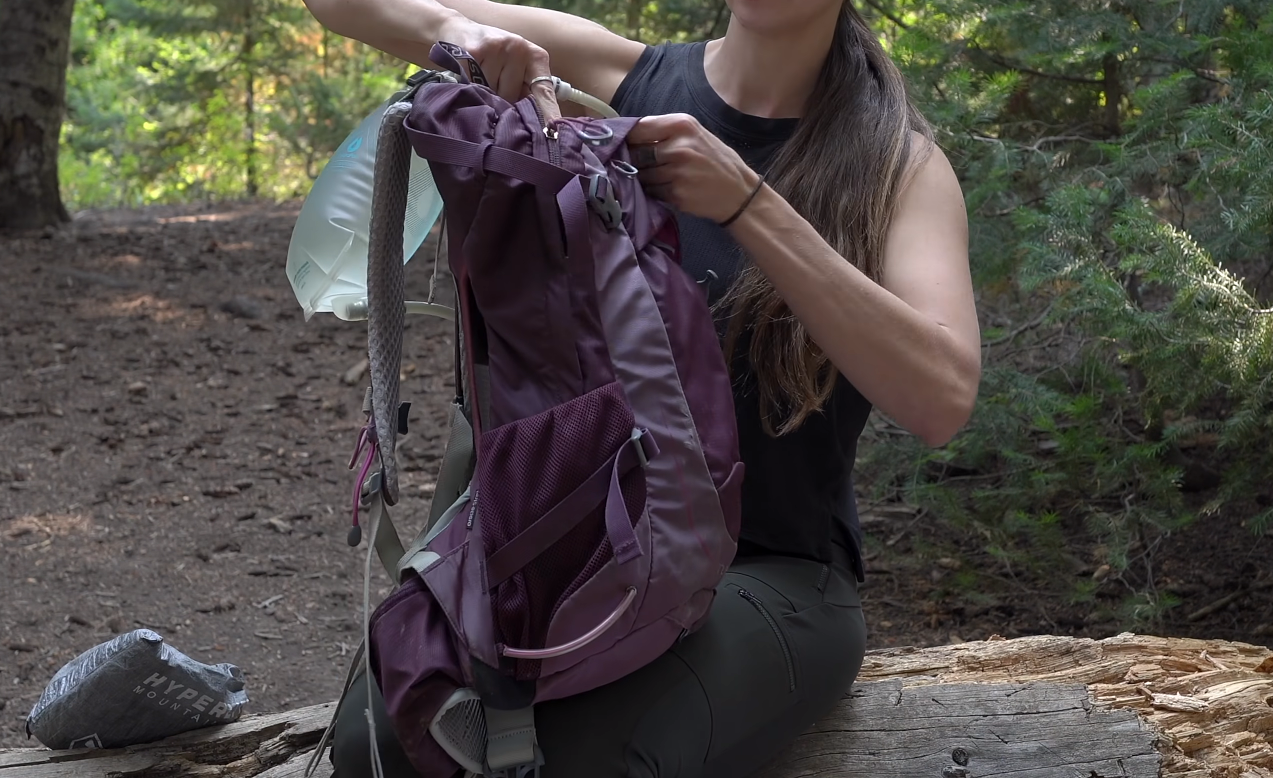
What to look for in a Water Bladder?
When choosing a water bladder for your backpack, there are several factors to consider.
First, it’s important to ensure the capacity of the bladder matches the size of your intended use. If you plan on taking longer hikes or trips that require more frequent hydration breaks, then a larger capacity model may be preferable. Additionally, look for a design made from durable material that can withstand punctures and abrasions. This will help keep leaking at bay and extend the life of your water bladder.
Finally, check the compatibility of the bladder with your backpack’s straps and frame. You want to make sure the water bladder fits securely in the dedicated pockets or compartments in your pack, as well as being able to attach using adjustable straps for extra stability.
By taking into account all of these factors when making your purchase, you can be sure that you’ll end up with the perfect water bladder for any adventure!
The Position of the Bladder and Tube
When you are deciding on the position of your water bladder, you should consider how easy or difficult it is to access during a hike. Some backpacks come with dedicated pockets for hydration bladders, which can make accessing your water much easier than if you had to reach inside the backpack’s main compartment. This can be especially helpful when you need to take a sip of water without completely stopping and taking off your backpack.
If there is not a dedicated pocket for a water bladder, then consider positioning the bladder at the top or middle of your backpack so that it doesn’t get in the way when you are packing or unpacking items from within the bag. It might also help to put some padding between the bladder and other items in the backpack to protect it from scratches or punctures. It’s also important to keep your hose and mouthpiece accessible so that you can easily take a sip of water without having to stop and unpack your bag.
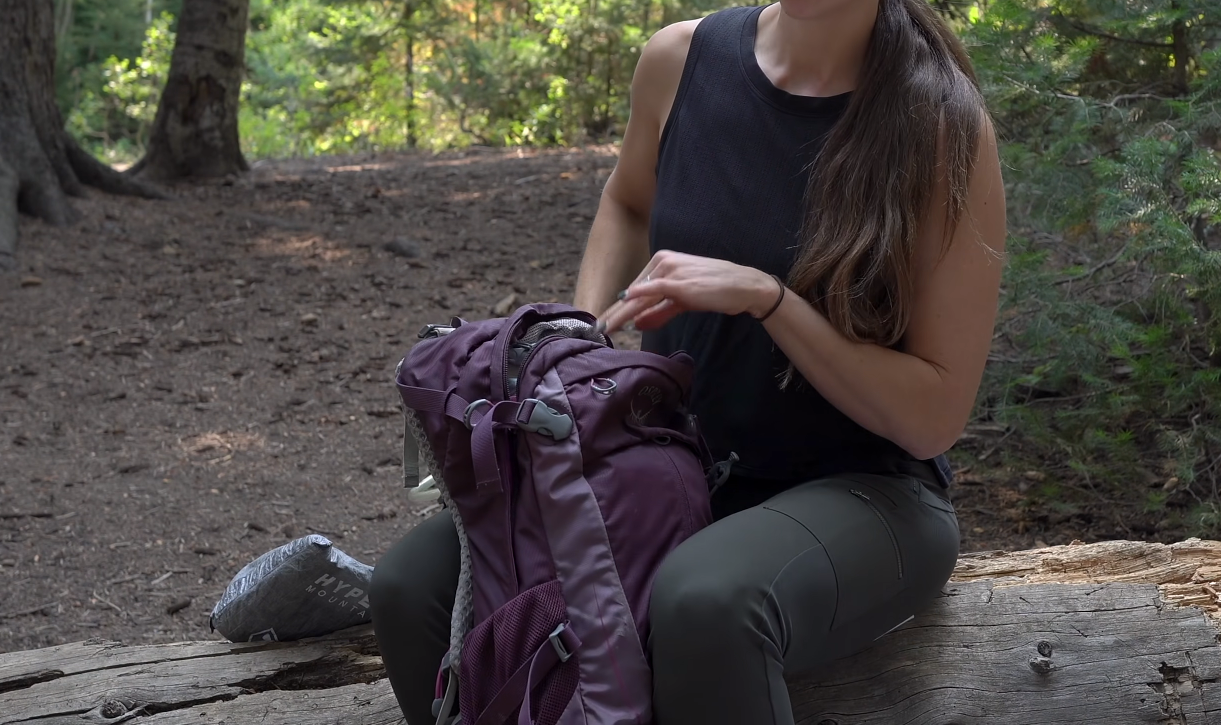
Material
It’s also important to consider the material of your backpack when choosing a water bladder. If you have a waterproof or water-resistant backpack, then no worries! Any type of hydration bladder should work well with this kind of bag. However, if you don’t have a waterproof backpack, then it’s important to make sure that the bladder is made from a non-porous material so that it won’t absorb any moisture from inside the pack and cause leaks.
Finally, make sure that your hydration bladder fits securely inside your backpack so that it doesn’t move around during hikes and cause discomfort or strain on other items in the bag. With these tips in mind, you should have no problem finding the right water bladder for your next adventure!
Size
Another important factor to consider when choosing a water bladder for your backpack is the size. It’s important to make sure that the bladder fits snugly in the backpack and does not take up too much space. You also need to make sure that there is enough room left in your pack for other items, such as snacks, emergency supplies, or clothing.
Finally, remember to check the weight of your hydration bladder when choosing one for your backpack. While all bladders are lightweight, some may be heavier than others depending on their material or size. Consider the overall weight of your pack and make sure you choose a bladder that won’t add too much extra weight so that you can stay comfortable while out on the trails.
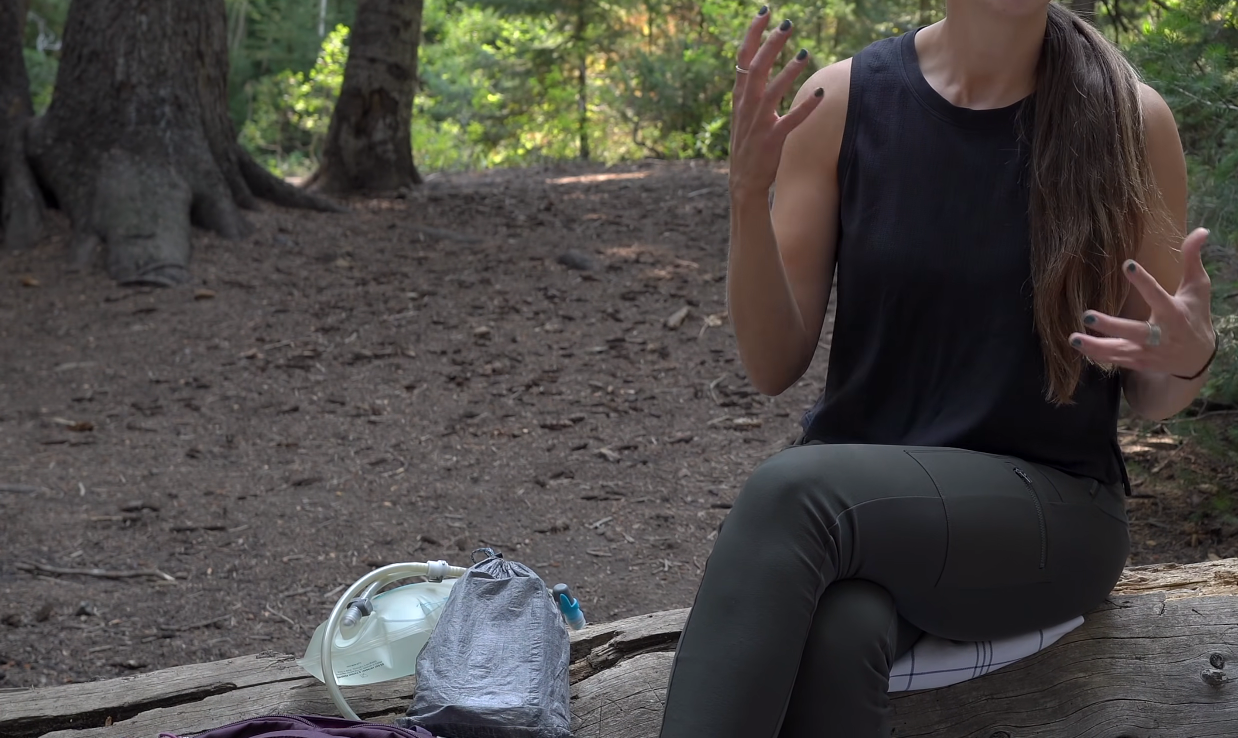
Comfort and Usability
These are the two most important factors to consider when choosing a water bladder for your backpack. You want something that is comfortable and easy to use, so make sure you take the time to read reviews and get a feel for how the bladder works before making your purchase. Look for features such as insulation, bite valves, or adjustable straps that can help ensure comfort and usability.
It’s also important to check the warranty on any hydration bladders you are considering – some may offer longer warranties than others depending on their materials or construction. This can be helpful in case of any wear and tear due to regular use during hikes. With all these factors in mind, you should have no problem finding the perfect water bladder for your next adventure! [2]
Now you have all the information and tips you need to answer the question Can You Put a Water Bladder in Any Backpack? The answer is yes – as long as you take into consideration factors such as material, size, position of the bladder, usability, and comfort. Now go get out there and stay hydrated on your next hiking excursion!
FAQ
How do you use a water bladder in a backpack?
Using a water bladder in a backpack is quite simple. Start by placing the bladder at the bottom of your pack and then threading it through the shoulder straps, so that it sits directly behind your back. Make sure to secure the mouthpiece or hose of the bladder with either a clip or holder on one of the backpack straps for easy access when you need to take a sip. You can also use elastic bands or clips to hold down excess hose length. Additionally, look for packs which have an internal sleeve designed specifically for holding bladders, as this will make them easier to carry and keep them from shifting around inside your bag.
Is a bladder or bottle better for backpacking?
When you’re planning to go on a backpacking trip, one of the most important things to consider is hydration. The best way to stay hydrated while out in the wild is by carrying both a bladder and water bottles. While bladders are designed to provide hands-free access and can hold larger amounts of liquid than typical water bottles, they also take up more space in your backpack and require extra care for proper cleaning and maintenance. Water bottles, on the other hand, can be easily packed into smaller spaces but may not provide as much convenience or capacity. Ultimately it comes down to personal preference and what type of environment you’ll be exploring – some prefer the ease of use provided by bladders; others prefer the portability and convenience of bringing several smaller water bottles. [3]
No matter what you choose, it’s important to make sure that your water source is properly secured and doesn’t leak or become contaminated. Be sure to also check the capacity of your bladder or bottles against the length of your trip and how much water you think you may need for the journey. It’s always better to have a little extra than not enough!
Where do you put your bladder in a backpacking pack?
When packing your backpack for backpacking, you’ll need to consider where to put your water bladder. It is important that you place the water bladder in an optimal spot so that it can be easily accessed and does not take up too much of the pack’s space.
Generally speaking, there are two main options when it comes to placing a water bladder in a backpack – either at the bottom of the pack or near the top. Depending on what type of backpack you have and how much storage space is available, you may also be able to place it somewhere in between these two points.
The bottom of your backpack is usually reserved for heavier items such as sleeping bags and tents. Placing the water bladder here will make it easier to access as it is closer to the opening of the pack. It also makes sense if you are carrying a lot of heavier items, as this will help keep your backpack balanced and distribute the weight more evenly.
On the other hand, putting your water bladder near the top of your backpack can be beneficial if you want quick access to it while on the go. This also means that you will not have to take out all of your gear every time you need a sip of water.
Ultimately, where you decide to place your water bladder within your backpack depends largely on how much storage space is available and how accessible you want it to be. Ultimately, finding what works best for you should be based on trial and error. [4]
No matter where you decide to place your hydration bladder, make sure that the tube is routed in a way that will not interfere with the functionality of your backpack. Also, consider how heavy items are distributed and if it is placed too high, it could affect the balance of your pack.
Are hydration backpacks worth it?
Hydration backpacks are an excellent addition to any outdoor enthusiast’s kit. They provide easy access to water, even when you are on the move. Not only that, but they also free up space in other bags as well. Plus, they come with a wide variety of features and sizes so you can find one that fits your exact needs.
So yes, hydration backpacks are definitely worth it if you plan on spending time outdoors or taking long trips in your backpack. They allow you to stay hydrated without having to stop and open your bag each time you need a drink of water. Just make sure that whatever model you choose is compatible with your existing backpack and fits all of your equipment comfortably inside before making your purchase.
If you’re still on the fence about whether or not to invest in a hydration backpack, consider all of the advantages it provides:
- Easy access to water while you’re on the move
- Customizable sizes and features
- Increases storage space in other bags
- Prevents you from having to stop every time you need a drink of water [5]
Ultimately, if you plan on spending significant amounts of time outdoors or taking long trips in your bag, then investing in a hydration backpack is an excellent choice. You won’t regret it when you realize how convenient and comfortable it is!
Useful Video: All About Water for DAY HIKING – What I Pack, Why, and More *super important* (hiking essentials)
Conclusion
So, can you put a water bladder in any backpack? The answer is yes! As long as you’ve got the right size and type of hydration bladder for your backpack, it can be placed inside without causing too much hassle. It’s simply a matter of finding the right fit and going from there.
When purchasing a new bag, make sure to look into whether or not it comes with a designated area for storing a water bladder. This will save you some time later on when deciding where to place it. Otherwise, all you need to do is think about which compartment may work best for holding the bladder before inserting it properly.
Make sure that the tube used to drink from the water bladder is accessible and easy to remove. Then, you’re all set for staying hydrated outdoors! With a little bit of planning and the right kind of backpack, anyone can use their own water bladder comfortably.
References:
- https://www.campingproshop.com/put-hydration-pack-backpack/
- https://purehiker.com/can-you-put-a-water-bladder-in-any-backpack/
- https://www.racingtheplanet.com/bottles-versus-bladders-finding-the-right-hydration-system-for-you
- https://sourceoutdoor.com/a/community/hydration-system/do-you-get-hydration-packs-with-back-protection
- https://www.advnture.com/features/are-hydration-packs-worth-it




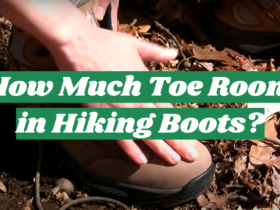

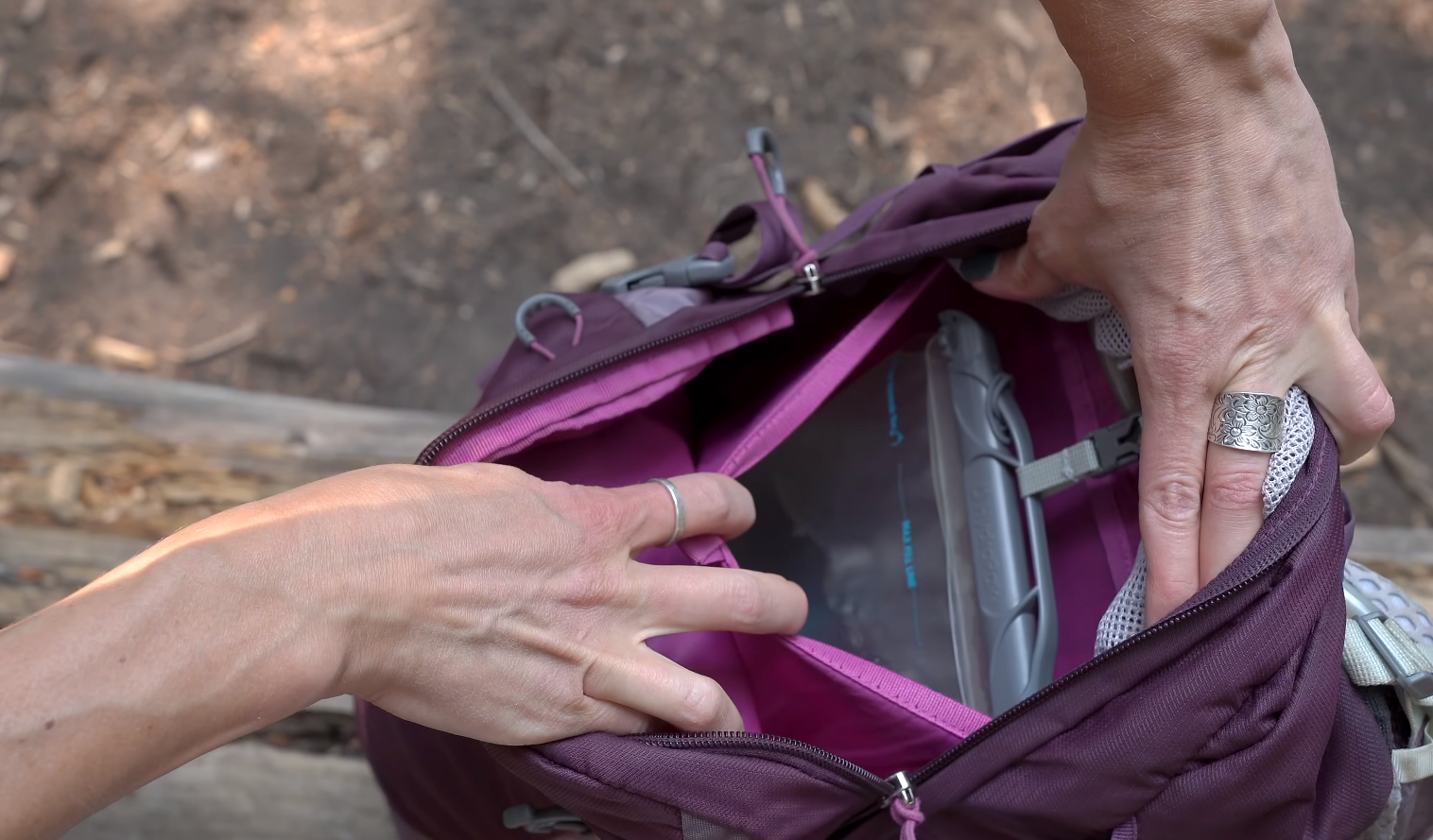


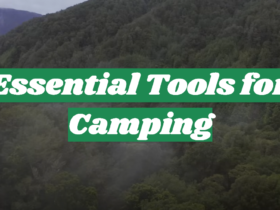

Leave a Review